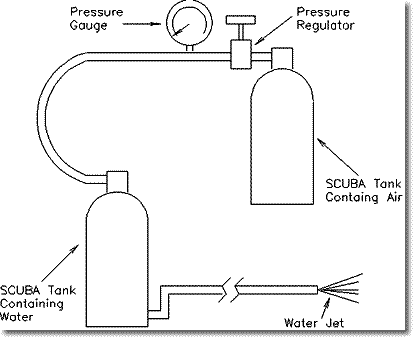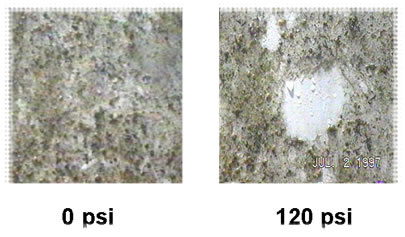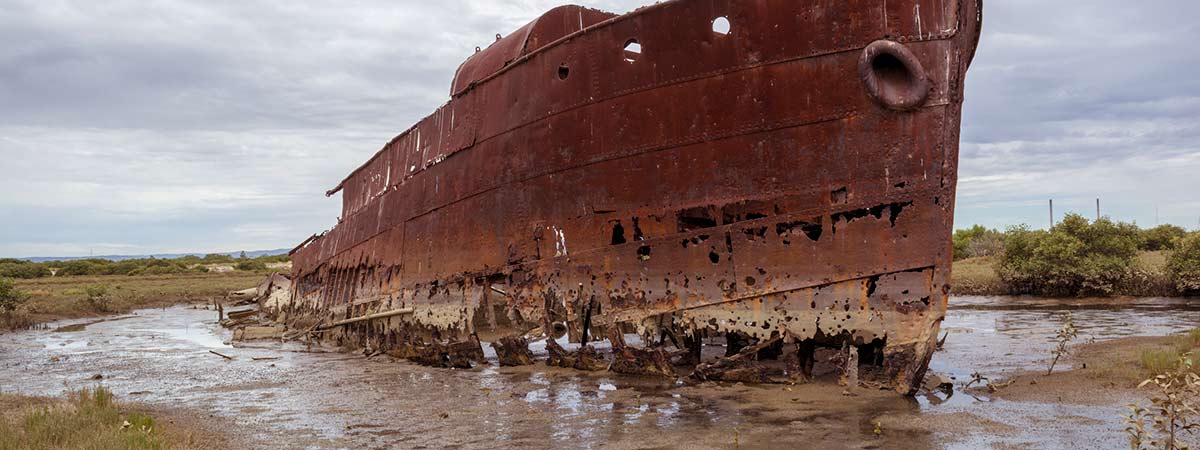Measurement of Biofouling Adhesion Using a Water Jet
The water jet test was developed to provide a more general assessment of biofouling adhesion and to be fully portable and self contained for field operations. Unlike barnacle adhesion testing, this method is more difficult to quantify due to the variation in texture and adhesive mechanisms associated with the different types of organisms.
Apparatus
The apparatus consists of a SCUBA tank containing compressed air and a regulator to adjust the pressure between 0 - 1.65 MPa (0 - 240 psi), a SCUBA tank containing water, and a quick change blow gun with a 1.6 mm (1/16 inch) diameter nozzle to apply the water jet. The test procedure is fully recorded by a digital camera.
Procedure

-
The condition of the surface subject to the test procedure is recorded using a digital camera.
-
The regulator is set to 20 psi to pressurize the SCUBA tank containing water.
-
The water jet is applied to the test area until the maximum amount of fouling that can be removed at that setting is achieved.
-
The biofouling at the surface is assessed and recorded by the digital camera.
-
The pressure is increased by 20 psi and the cycle repeated until all the fouling is removed or the maximum pressure setting obtained (240 psi).
Calculation and Interpretation of Results
The biofilm is divided into hard foulers, soft foulers and slime films. The water jet pressure required to remove each of these groups is recorded. The maximum true force exerted by the water jet at the surface for each air pressure setting was measured using a force transducer and by observing the area over which the water exerted an effect and is shown below.


